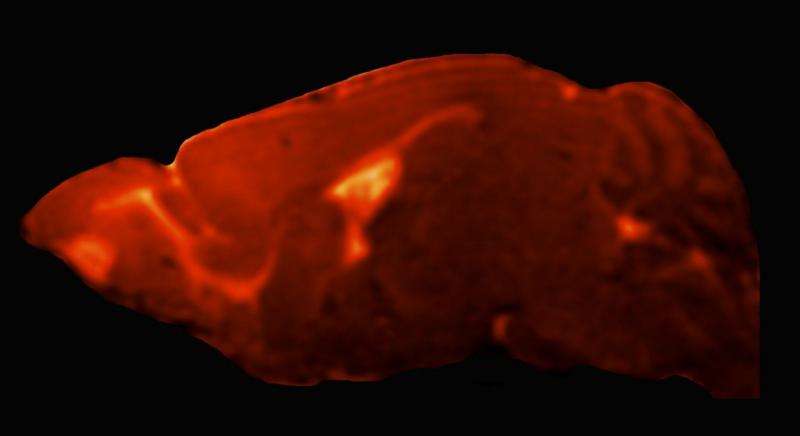Patterns of brain swelling may explain susceptibility of children to cerebral malaria

Brain swelling is a strong predictor of death in children with cerebral malaria (a severe form of the disease where parasites have accumulated in brain vessels), and also in mice with experimental cerebral malaria (ECM). A high-resolution whole brain imaging analysis of swelling in ECM published on March 10th in PLOS Pathogens suggests that cerebral malaria depends on the permissive environment in a specific brain area. The area, which changes during development, functions as a traffic route for immature nerve cells and immune cells especially in young animals, and allows progression of a strong host immune response into the central nervous system.
Angelika Hoffmann, from University of Heidelberg, Germany, and colleagues monitored the evolution of ECM-associated fluid increase in the brain (called edema, a condition that ultimately leads to brain swelling) in live mice using high-field magnetic resonance imaging (MRI) with whole-brain coverage. Following 10 malaria-infected mice over time, the researchers saw a distinct pattern of cerebral disease spread. Based on the timing of the earliest symptoms they observed, they added five more mice and focused specifically on the initial phase of brain abnormalities.
The researchers found that leakiness of the blood-brain-barrier and consecutive edema starts in an area called the olfactory bulb (OB) that is involved in the sense of smell. Before the mice show any obvious disease symptoms, the edema spreads deeper into the brain along a specific path called the rostral migratory stream (RMS) that is used as a traffic route by immature nerve cells and immune cells. In mice with severe disease, the edema eventually reaches the brain stem, and by that time the animals start to fall into a comatose state.
The researchers conclude that their findings "provide strong evidence that the OB+RMS, which represents a structurally and functionally unique axis of immune and neuroblast trafficking, is the structure permitting and transmitting the inflammatory response of ECM deeper into the brain".
Brain imaging results in human malaria patients published by other scientists suggest that swelling starts and spreads along a similar path, that is also known to be a migratory route for nerve-cell precursors (a so-called neurogenic niche) in humans (with age, nerve cell generation and migration declines). Based on these human studies and their own results in mice, the researchers suggest that "the spread of inflammation in cerebral malaria may be facilitated by a distinct organization of the neurogenic niche in the young, providing a permissive environment not only for neuronal migration, but also for inflammation".
More information: Hoffmann A, Pfeil J, Alfonso J, Kurz FT, Sahm F, Heiland S, et al. (2016) Experimental Cerebral Malaria Spreads along the Rostral Migratory Stream. PLoS Pathog 12(3): e1005470. DOI: 10.1371/journal.ppat.1005470




















